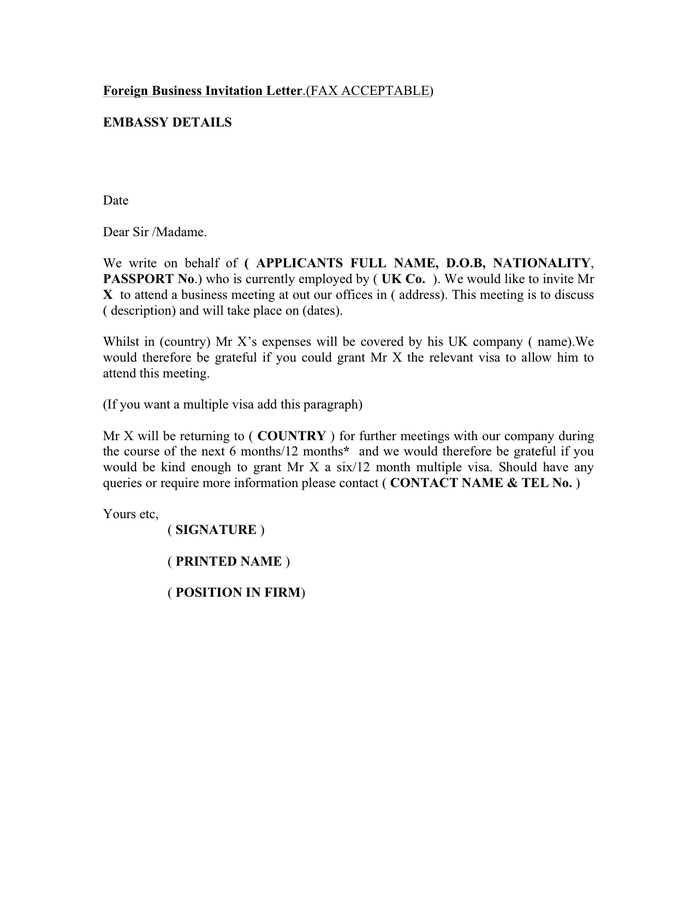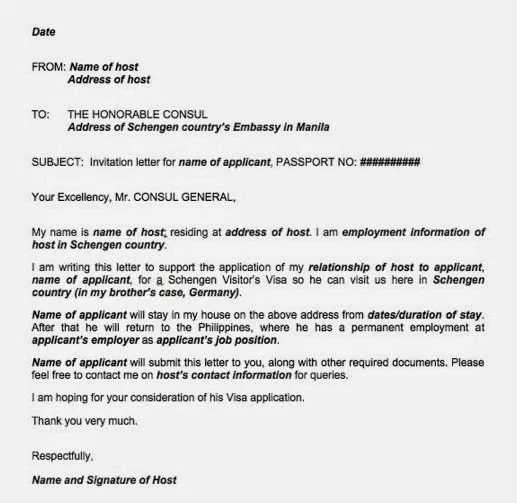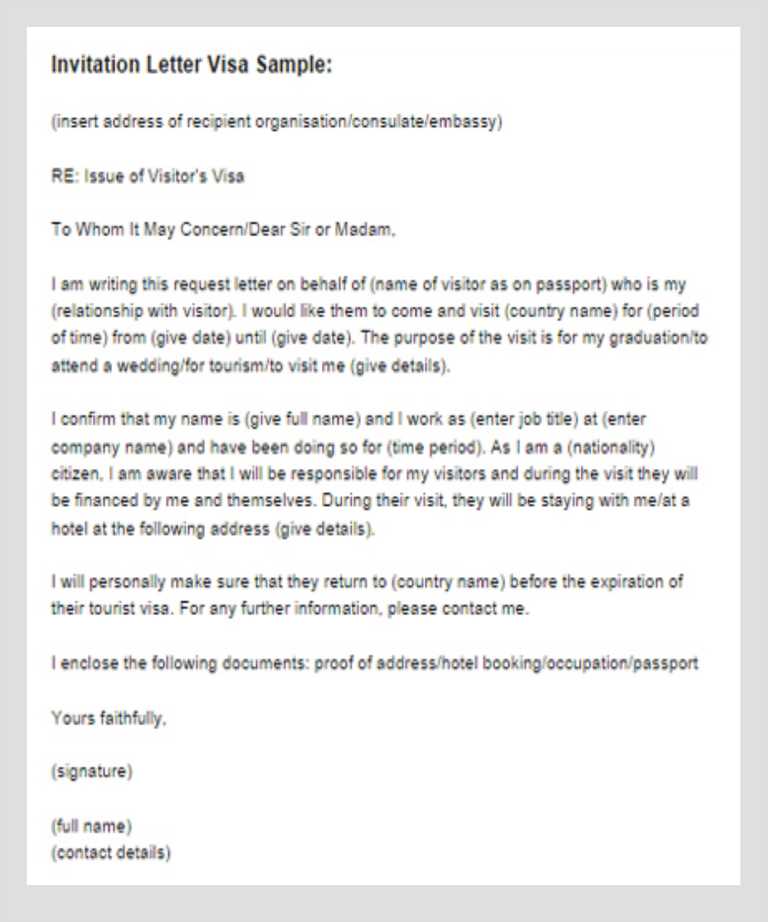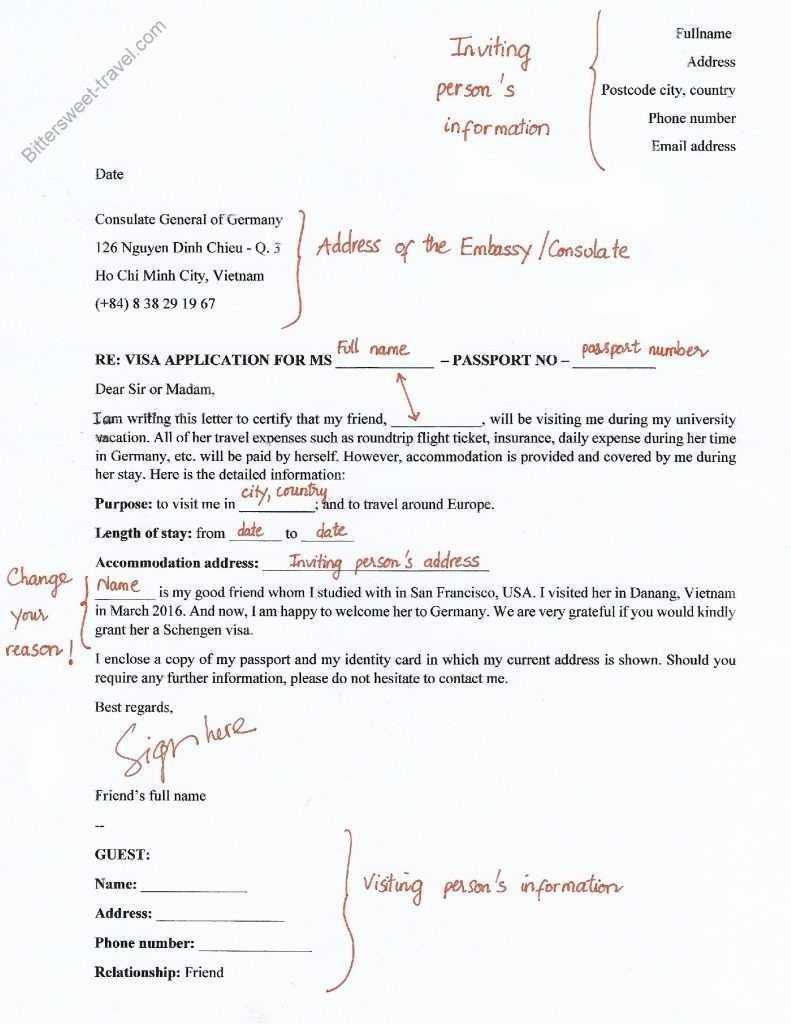Invitation Letter Template for Schengen Visa Application

When planning to visit a country in Europe, you may need to provide an official request from someone in that country. This request serves to confirm your trip and ensure your entry is authorized. It’s an essential part of the travel process, helping authorities understand the purpose of your stay and who is hosting you. Below are key considerations and steps to help you prepare this important document.
Key Information to Include

Make sure to provide the relevant details that confirm your visit and who you will be staying with. Include your full name, passport number, and the dates of your planned stay. Additionally, the person inviting you should state their relationship to you, their address, and contact details. Clear and precise information is essential to avoid delays or rejections.
Details for Your Host

- Full name and address of the host
- Contact details (email and phone number)
- Proof of their legal status (citizenship or residency)
Visitor’s Information
- Your full name and passport number
- The purpose of your trip
- The exact dates of your arrival and departure
Formatting and Presentation

Ensure that the document is clear and follows a logical structure. Begin with a formal greeting, followed by a clear explanation of the reason for the trip. The host should provide assurance regarding accommodation and support during your stay. Use a professional tone, and avoid any informal language to make the document appear official.
Final Considerations
- Sign the document at the end
- Include supporting documents, such as proof of accommodation
- Double-check all dates and details for accuracy
By following these guidelines, you can ensure that the process is smooth and your request is well-received. Clear communication between you and your host will help avoid complications during your application process.
How to Write a Travel Support Document
Essential Information for Entry Requests
Common Mistakes to Avoid in Documents
Required Supporting Materials for Entry
Effective Tips for a Persuasive Request
How to Format Your Document Properly
Creating an official request for your trip is an essential part of the process when traveling to a foreign country. This document confirms the purpose of your stay, the person who is supporting your visit, and provides the necessary details that help authorities assess your plans. Writing this type of request requires attention to detail, structure, and the inclusion of accurate information.
Essential Information to Include
Be sure to cover the fundamental details in your submission. Include personal identification data, such as your full name, passport number, and trip dates. The individual hosting you should provide their name, address, and contact information. Additionally, a statement of their legal status is necessary to show their eligibility to host you during your visit.
Common Mistakes to Avoid
- Omitting important personal details or trip dates
- Using informal language that can undermine the document’s authority
- Including unclear or incomplete information about your host
Ensuring that the document is both professional and complete will help avoid unnecessary delays or complications. Avoid vague language or any information that might raise questions during the review process.
Required Supporting Documents
Along with your request, you must submit supporting materials to validate the purpose of your trip and your host’s ability to accommodate you. This can include:
- Proof of your host’s legal status in the country
- Accommodation confirmation or booking
- Proof of financial means to cover your stay
Effective Tips for a Persuasive Request
- Maintain a formal tone throughout
- Clearly state the purpose of your visit
- Be concise but thorough in describing your plans
Being direct and organized in your presentation will increase the likelihood of a favorable outcome. Providing supporting evidence and showing clarity of your intentions will strengthen the request.
Proper Formatting of the Document
Ensure your document is easy to read and professional. Use clear headings, bullet points, and short paragraphs to avoid overwhelming the reader. Include all necessary information in a structured format, with accurate spelling and punctuation throughout.